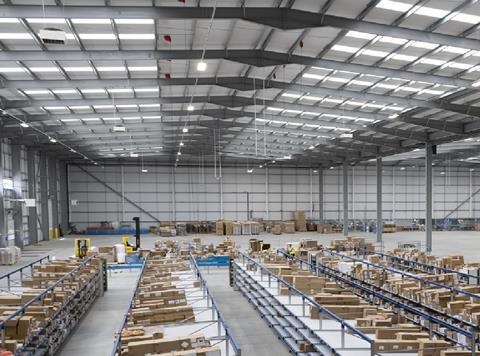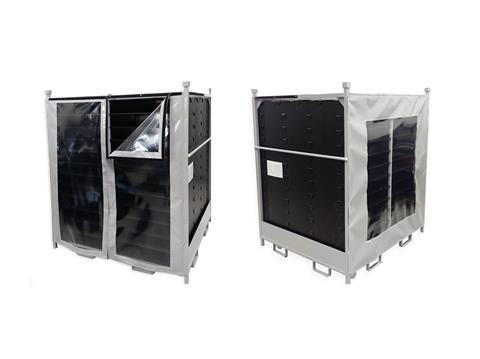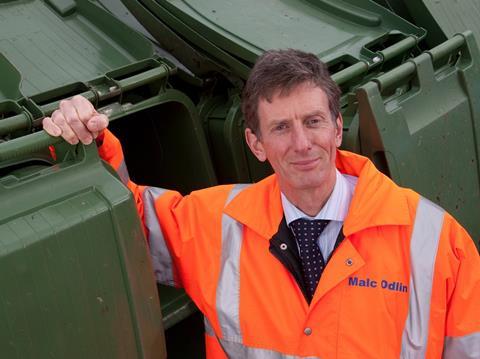
Much of the packaging sustainability debate focuses on consumer-facing solutions, however what goes on behind the scenes?
Libby Munford hears from DS Smith Plastics, Peli Biothermal, Taylor Packaging, Luxus and PFS to discover how the transit packaging sector is making changes to reflect the ever-evolving packaging landscape towards a more sustainable future.
Reflecting major trends
There are a number of ways transit packaging is striving to address the main trends surrounding sustainability. Encouraged by environmental regulations, companies are looking for economic solutions that can be reused and recycled at the end of their useful life. Reducing the packaging that surrounds the product itself, and reducing packaging used to transport products through logistics supply chains, and packaging waste in general, are all obvious and clear-cut solutions.
There is an increasing demand and trend for packaging that is well-suited for closed-loop supply chain networks and reverse logistics. Focuses such as load optimisation where packaging design is key to achieve objectives is also a key area, as well as improving efficiencies in material handling and reduction in logistics and transportation costs.

DS Smith Plastics steel container
Louis Patruno, marketing manager, DS Smith Plastics, Extruded Products, says:
“While manufacturers are designing supply chains infrastructures capable of collecting recover and reused products; our designers are developing packaging solutions that facilitate efficiencies in material handling (that is, loading and unloading components from packaging), reductions in single-use packaging waste, material damaged in transit, and logistics and transportation costs.”
Protection is paramount when it comes to transit packaging, however once this clients’ main requirement is secure, environmental impact plays a close second in today’s climate as a main concern.
Paul Terry, sales director, EMEA, Peli BioThermal, global specialists in cold chain packaging, stresses that, “The principal requirement of all our clients is the secure protection of their payloads within the tight temperature limits that they are committed to ship their products at. Once we are achieving that, and we can achieve that with the various solutions that we can offer, the question is how does the client achieve the thermal protection as cost effectively as possible with the least environmental impact? That’s the real challenge.
“This can be achieved through various methods and different systems that we deploy. These range from fairly standard water-based packaging systems, which have optimised performance, through to more sophisticated high performing products and ultimately, very much in vogue today, the deployment of reusable high-performance packaging systems.”

Adam Taylor, MD, Taylor Packaging
Considerations are even made down to the tape that is used on transit packaging. Adam Taylor, MD, Taylor Packaging a UK based, independent distributor and manufacturer of packaging materials states, “A key trend is that businesses are purchasing more paper-based products instead of polythene-based products in an effort to move to more sustainable products. For example, we have seen a boom in our customers ordering paper tapes rather than polybased tapes. This is due to the fact that the paper tape can be disposed of with the corrugated box, while polythene should be removed from the box and recycled.”
He also highlights that waste regulations are based on weight, and companies are taxed on the weight they declare.
“We work closely with our customer base to provide advice and support on reducing waste from using high strength blended films to exploring the compostable route. We supply compostable materials that can be used for flexible films and bags as well as injections moulded products. Returnable systems are also a positive way of reducing one trip packaging materials,” Adam Taylor shares.
Durability is key
Whereas traditional one-way packaging is on a one-way ticket to the waste treatment stream, reusable packaging lasts five to seven years before it goes to waste. That makes it less of a disposable commodity, says Louis Patruno.
Because reusable plastics packaging is durable, the protection of products is not compromised but instead, improved.
Malcolm Odlin, purchasing manager, Luxus, a producer of prime and recycled polymers, (commenting on food distribution networks in the UK) supports the view that transit packaging must be durable and high-quality, as this ensures the material can be recycled back into high value end products for sectors such as construction, automation, or back into transit packaging. He states that providing a prompt collection service for transit packaging once it has been used places customer service as a main driver they offer clients.

Malcolm Odlin, purchasing manager, Luxus
Drive towards reuse
Reusability is a viable strategy for supporting company’s sustainability objectives.
Louis Patruno underlines there is already a trend to replace single-use packaging with returnable packaging that can be recyclable at the end of their useful life. “Reusability and recyclability are a preferred alternative over single-use packaging and this trend is already being addressed as a positive alternative in various EU directives regarding sustainability.” He expects improvements in the availability of collection systems and end-user acceptance of post-consumer recycled goods.
There has been a growing trend over a number of years towards reusable packaging systems, however Paul Terry points out this has only been taken up where there is a provable logistics saving right from the start, so economics have driven most reuse.
“The changing environment now in terms of the political and social responsibility issues around the environment and in particular plastic waste is now to the point where it’s the sustainability and corporate image which is driving the desire to reuse as much as the economic benefits,” he observes.
“In the reality of today actually the two, in most cases, are still fairly compatible it is just that more stakeholders now in the pharma sector are driving the desire for change. Change is never easy when switching from one qualified packaging system to another qualified packaging system, but there is now more desire to deliver it because of the urgency that the environmental impact has given the boardrooms of the pharmaceutical companies.”
Although there is clearly a huge drive towards ‘reuse’, this is not the only answer, there is a multiplicity of solutions, depending on the environment you are shipping to and the logistics services that are capable in the countries or regions you are operating in.
“So, what we do, when it comes to single use packaging, is ensure that none of our products have any composite materials. This means that at end of life all products can be readily broken down into the specific waste stream channels that can either be recycled or responsibly put into landfill or incineration,” shares Paul Terry.
Efficiency equals environmental benefits
Higher efficiency can reduce the payload of actually physically moving products from point A to point B. More efficient packaging equals less airplanes, less trucks and less vans.
DS Smith’s packaging solutions are lightweight, foldable, durable, reusable and recyclable. These properties allow for load optimisation of full and empty containers and reduction of CO2 when full and when empty with the highest ratio in return logistics. In other words, less trucks required to transport cargo.

PFS
Joe Farrell, vice president of International Operations at PFS, whose core market is the health and beauty sector adds, “In our mind air is cost. Besides equating to a bad consumer experience there is no need for our clients to pay to ship air. We have systems which use all the dimensions of the product we are packing and, if combining multiple items in a box, it chooses the correct box size based on this to limit the amount of wasted space.”
Asides from reducing the shipment of air, lengthening the life of reusable packaging is also key to efficiently packing products. Paul Terry states there is no point deploying a reusable system when you are only going to get a couple of uses from it:
“The systems we bring to market have shelf lives of over five years and expect to have many uses per year over their lifetime. This really reduces the material impact of shipping. The next stage is to look at how we make efficient return systems so that we move empty packaging as least as possible and are looking to build networks of shared interests in order to do that.”
The sector look set to support accelerated deployment of reusable packaging systems, across a range of sizes from bulk shipments to smaller parcels.








![Credo-Go-on-packing-line[1][1]](https://d2wrwj382xgrci.cloudfront.net/Pictures/100x67/9/4/0/9940_credogoonpackingline11_655996.jpg)


